The UC Berkeley campus.
How the great Berkeley tree-sit rebellion ended in defeat
A football-crazy institution, the University of California was desperate for a modern sports training facility in the early 2000s. The perfect place to put one, it decided, was next to the football stadium in a plot that also held a grove of stately trees — redwoods and pines, but mostly coast live oaks.
Berkeley had a law on the books prohibiting the removal of any live oak with a trunk wider than 6 inches. But the city had no jurisdiction over the university campus. The trees were doomed.
So it was that a group of protesters, inspired by the resistance campaigns of the Humboldt timber wars in the 1990s, climbed into the limbs of the grove in the winter of 2006 and vowed to stay there as long as it took to save the trees.
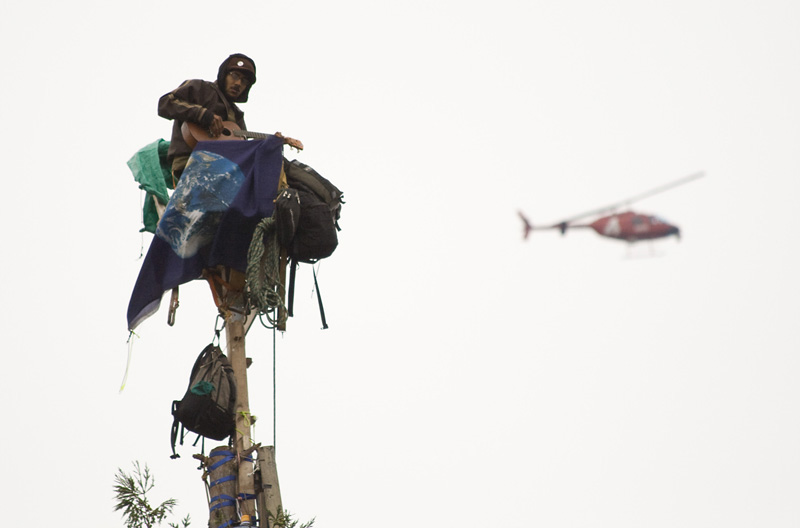
Sean Goebel, www.sgphotos.com
On the ground, allies of the tree-sitters fought the project through the courts. But by September of 2008, their legal challenges were exhausted. The university promptly severed all of the branches below the tree-sitters’ redwood perch and halted their food deliveries.
With no way to climb up or down, the four remaining protesters were forced to crawl onto a scaffolding erected to reach them and return to earth, concluding the longest urban tree-sit in history. The redwood was felled the same day.
The authorities, grateful to have the matter settled, declined to slap the protesters with serious charges. Over the next several years, the $150-million sports facility rose as planned, a gleaming monument to the clout of college sports.
Below, see more pictures from the tree-sit’s final day by Sean Goebel, a photographer who was a Berkeley student at the time. His full series of photos is here: sgphotos.com
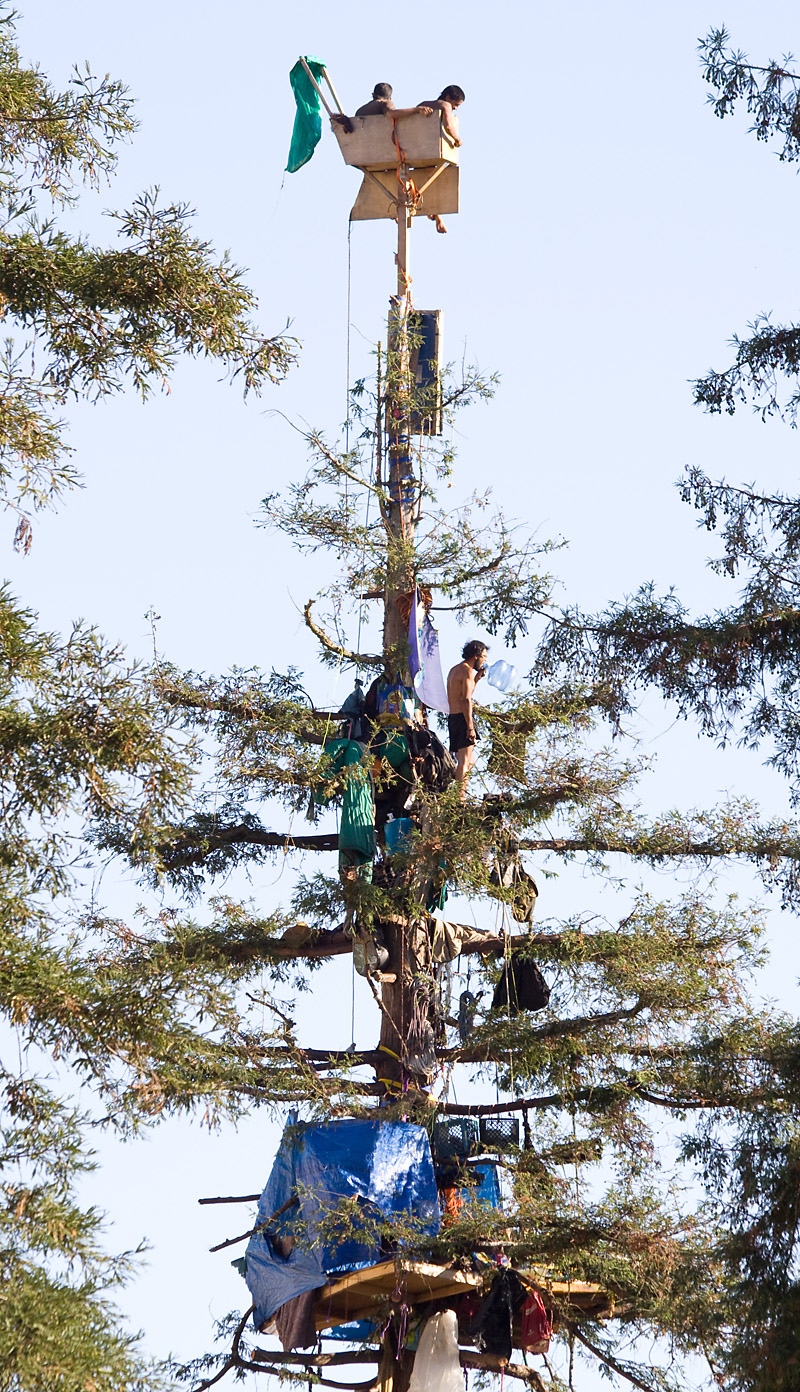
Sean Goebel, www.sgphotos.com
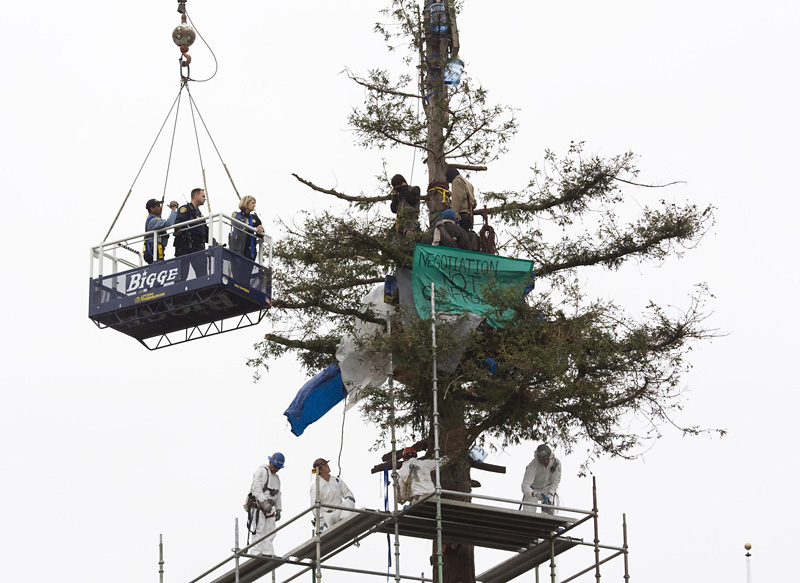
Sean Goebel, www.sgphotos.com
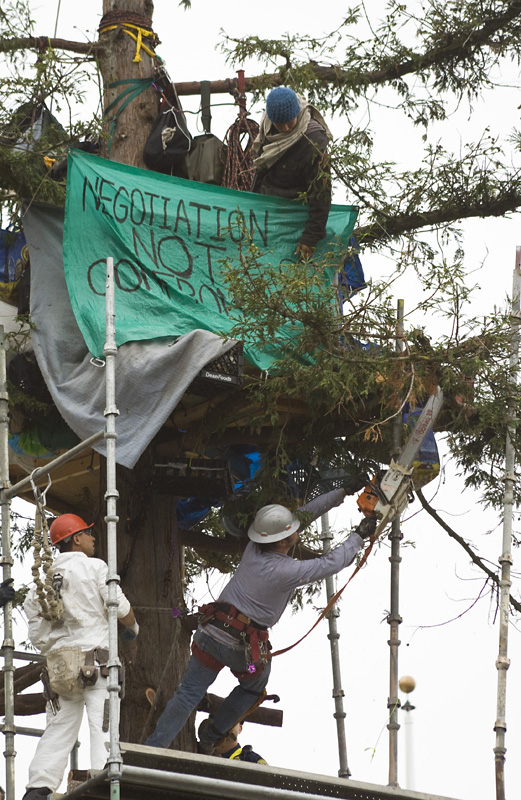
Sean Goebel, www.sgphotos.com
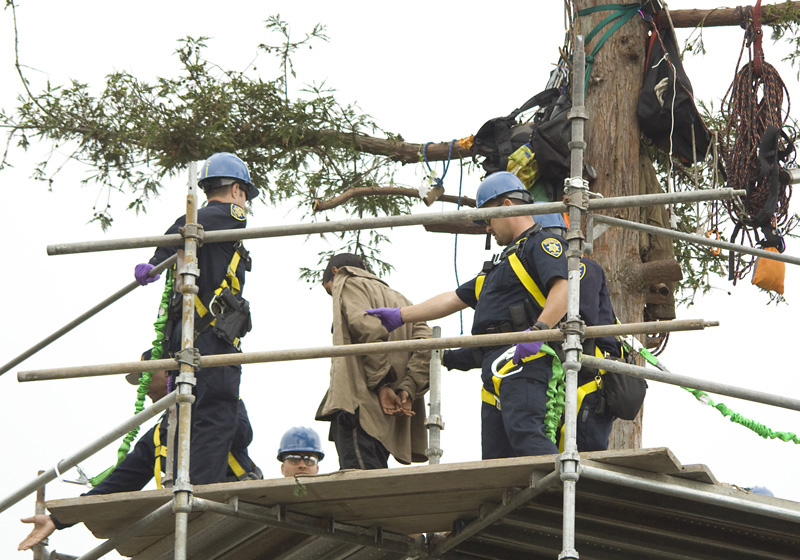
Sean Goebel, www.sgphotos.com
This article is from the California Sun, a newsletter that delivers must-read stories to your inbox each morning . Sign up here.
Get your daily dose of the Golden State.